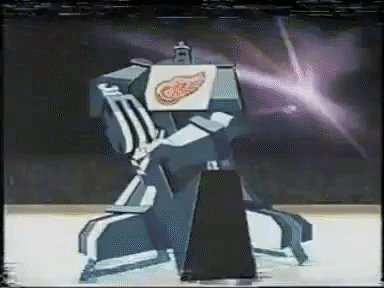Through four months of the schedule this season, the Penguins find themselves in familiar territory, among the top one-quarter of teams in power play percentage. However, the Penguins are the league leaders in shorthanded goals allowed. Head coach Mike Sullivan has repeatedly emphasized that the power play must operate with more of a defensive conscience.
#Pens HC Sullivan said the team is "probably there" on doing something drastic with the PP to prevent shorthanded goals. "We have to take more responsibility for having a defensive conscience when guys are in trouble. It doesn't seem like we're recognizing the danger." -SK
— Pens Inside Scoop (@PensInsideScoop) January 29, 2019
Sullivan on why SHGs have been a problem: Because we don't have a conscience defensively when we're on the ice on the power play, and it's inexcusable. And we've talked about it and talked about it. It's hard to win when you give up a goal like that.
— Angie (@acarducci) December 2, 2018
Two months ago, shortly after Pittsburgh yielded its seventh SHG, Pensblog brother Geoff presented advanced statistics and a detailed video analysis of each shorthanded goal that showed the four forward – one defenseman power play setup is still largely the best combination of players that can be assembled for the current Penguins.
Hockey-Graphs has also delved into various other predictive measurements of power play success.
Is there a composite descriptive statistic that could quantify a team’s total power play performance: goals scored and shorthanded goals allowed while simultaneously accounting for different power play strengths (5-on-4, 5-on-3, 4-on-3)?
In January 2017, Nathan Gabay created Overall Power Play (OPP) to describe combined power play and penalty kill performance, with an excellent discussion of his statistic including historic leaders and historic bottom-feeders.
We intuitively know the limitations of simple power play percentage (PP%). Since it is merely power play goals divided by power play opportunities, it cannot differentiate between power plays that failed to score in the full two minutes or the ones that ended after three seconds because of a penalty immediately committed by the power play unit. Both situations go in the books as 0-for-1.
Here is a table of teams ranked by Power play percentage.
[office src=”https://onedrive.live.com/embed?resid=2A728A26A493C6FE%21177&authkey=%21AF1ZP76wcFmuPuw&em=2&wdAllowInteractivity=False&ActiveCell=’Sheet1′!E8&wdHideHeaders=True&wdInConfigurator=True” width=”350″ height=”520″]All statistics in this article were recorded after games of January 31, 2019.
Calgary ranks just behind the Penguins in PP% but the Flames have allowed seven fewer shorthanded goals (SHGA). Can we somehow blend the two columns into a single statistic to evaluate overall power play performance?
The following is a preliminary attempt to do so.
Net weighted Power Play (NwPP)
First, NwPP is not “New pee-pee“, but rather, “N-w-P-P“.
- NET: because we make a straight deduction for shorthanded goals allowed from a team’s total power play goals
- WEIGHTED: because we give a weighting factor to each power play strength situation.
The resultant single number is not a percentage but a power play “score” for more comprehensive and accurate team-to-team comparison.
Calculating PPG per 2 minutes (rather than opportunities)
We will measure power plays per unit of time, specifically per two minutes, instead of per opportunities. This is because greater than 97% of power play time this season results from a single two-minute minor penalty.
Net PPG = PPG – SHGA
For every power play strength (5-on-4, 5-on-3, 4-on-3), we calculate net power play goals from power play goals scored minus shorthanded goals allowed.
Weighting factors for goals at 5-on-4, 5-on-3, 4-on-3
Note: Skip this section if you hate math.
Logically, the degree of difficulty of scoring while on a 5-on-3 power play is less than trying to score while playing 5-on-4. Therefore, a 5-on-3 goal should have a lower value based on some weighting factor.
Can we come up with a simple model for hockey players’ goal-scoring output analogous to assembly-line robots? If we describe both 5-on-3 and 4-on-3 power plays relative to the common 5-on-4 in terms of the ratio of penalty killing workers to power play workers, we derive these degree of difficulty weights for each type of power play goal scored.
| PK | PP | WEIGHT | OUTPUT | ||
| 5-on-4 | 4 | 5 | (4/5) / (4/5) = | 1.0000 | 1.0000 |
| 5-on-3 | 3 | 5 | (3/5) / (4/5) = | 0.7500 | 1.3333 |
| 4-on-3 | 3 | 4 | (3/4) / (4/5) = | 0.9375 | 1.0667 |
Borrowing from ancient factory skills vs. productivity theory, output is simply the flip side (reciprocal) of the degree of difficulty weight. That is, if it’s only 75% as difficult to score when playing 5-on-3 relative to playing 5-on-4, then we would expect 33% (1 / 0.75) more goal-scoring at 5-on-3 relative to 5-on-4.
Below, the Expected column is simply the output numbers from above. The Actual column represents real 5-on-3 or 4-on-3 PP% relative to 5-on-4 PP%.
| 5-on-3 EXPECTED | 5-on-3 ACTUAL | 4-on-3 EXPECTED | 4-on-3 ACTUAL | |
| 2018-19 | 1.3333 | 1.2991 | 1.0667 | 1.3250 |
| 2017-18 | 1.3333 | 1.3823 | 1.0667 | 0.8440 |
| 2013-18 | 1.3333 | 1.3851 | 1.0667 | 0.9829 |
So do real hockey players follow the robot model? In a word, no, obviously. There is lots of fluctuation in actual 4-on-3 scoring due to its small sample size – approximately 1% of all power play time. The results for actual 5-on-3 scoring is closer to our model but still about 2 to 4% different.
Therefore, for our weighting factors, we will choose the five-season actual data from 2013-18 because it is our largest appropriate, recent sample. Again, weights are the reciprocal of the output. So for 5-on-3: (1 / 1.3851) = 0.7220 and for 5-on-4: (1 / 0.9829) = 1.0174.
NwPP Formula
NwPP
= [(Net PPG 5-on-4) + 0.722(Net PPG 5-on-3) + 1.0174(Net PPG 4-on-3)] divided by [Total power play time] x 2 minutes
Comparing PP% vs. NwPP
[office src=”https://onedrive.live.com/embed?resid=2A728A26A493C6FE%21179&authkey=%21ABYK6qsj_JbImpI&em=2&wdAllowInteractivity=False&wdHideHeaders=True&wdInConfigurator=True” width=”360″ height=”600″]Green – higher NwPP rank than PP% rank
Red – lower NwPP rank than PP% rank
White – no change
Not surprisingly, the Penguins fall nine spots, from seventh place in raw PP% to becoming the median team in the NHL – 16th place – when ranked by NwPP, partly damaged by their 11 shorthanded goals allowed. Indeed, the large majority of teams that fell have given up a larger than average number of shorthanded goals. Yet Boston, with 10 shorties allowed seems an anomaly, remaining in the top one-fifth of teams. Looking at their splits, Boston is near the top in power play goals scored, but middle of the pack in total power play minutes. This could be interpreted as a club that scores quickly with the man-advantage, thus keeping them high in the NwPP standings since this is a per-units of time statistic.
ROAST ME
Readers with a much more advanced background in math, stats and logic are most welcome to correct, criticize and rebuke NwPP in the manner of Reddit’s r/RoastMe.
As the title indicates, NwPP is preliminary work, but certainly a start at evaluating and describing overall power play performance better than what we currently have in the public domain.
Add The Sports Daily to your Google News Feed!

